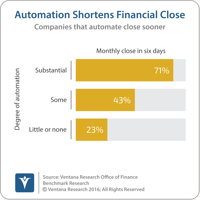
Robotic process automation (RPA) relies on programming or the application of analytical algorithms to execute the most appropriate action in an automated workflow. RPA enables business users to configure a “robot” (actually, computer software) to interact with applications or data sources to process a transaction, move or manipulate data, communicate with other digital systems and manage machine-to-machine and man-to-machine interactions. This technology is gaining increasing notice by finance...
Topics: Operations, automation, close, closing, Continuous Accounting, finance, banking, Robotic Process Automation, Accounting, web crawler, legacy systems, bank










